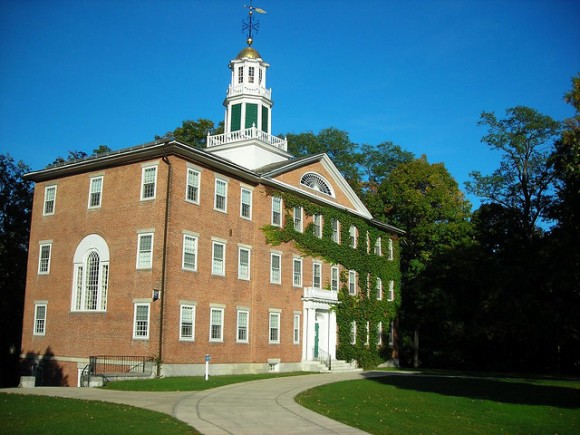
AT a ceramah on 4 June 2012, Opposition leader Datuk Seri Anwar Ibrahim told students to stop repaying their National Higher Education Fund Corporation (PTPTN) loans. Once the Pakatan Rakyat (PR) comes to power, Anwar said, it would abolish the loan scheme and provide free tertiary education.
The very next day, the PTPTN froze loans to new students at the PR-run Universiti Selangor (Unisel). Although the freeze was lifted a few days later, the weaknesses of the PTPTN remain. So does the strongly partisan nature of the debate.
This argument will not get far until we move beyond the polarised back-and-forth between maintaining the PTPTN and abolishing student fees. I would like to add my voice to those calling for attention to broader issues: a wider range of policy solutions to higher education financing, and more thorough consideration of our national educational aspirations.
The mess of higher education funding
Malaysia is not alone in grappling with education policies. In Quebec, sustained protests against proposed university fee hikes resulted in hundreds of arrests, thousands of student walkouts and stalled negotiations between the government and student leaders.
We are hardly the only country facing a crisis in tertiary education funding. The economics of higher education are, to put it technically, a mess. Should we charge interest on student loans, or should we subsidise the cost of borrowing against inflation? Do the financial returns from university degrees accrue to the national economy, or to private purses? If the latter, should the public fund them? And what about all the unemployed graduates?
It will take a combination of economists, policy experts, and public consultation to decide those tradeoffs. One place to look for answers is other countries’ models of higher education.
Consider the United Kingdom. University funding has been a contentious issue in the UK since the 1998 introduction of tuition fees to cover budgetary shortfalls. In 2010, a proposed rise in tuition fees resulted in a wave of protests and 153 arrests.
Although the fee hike will be enforced in the next academic year, in 2010 it faced a key challenge from the graduate tax. Endorsed by the National Union of Students and considered by the coalition government’s Browne Review, the graduate tax model replaces university fees and loans with a system of additional tax obligations for the first 20 years after graduation.
While the graduate tax has the benefit of providing education for free at the point of delivery, many argued that it would distort incentives negatively. Since graduates who earn more would have to contribute more to the university fund, some argued that it would dim their motivation to work. Others believed it would encourage young graduates to work abroad in order to avoid the tax.
Another argument against the graduate tax pointed to the American system: while the market-based competition of higher education in the US drove universities to improve efficiency, the centralised disbursal of the graduate tax would take away the incentive for universities to innovate.

But US-style university competition widens the gap between winners and losers. Often the focus is on the prestigious private institutions that have accumulated impressive research reputations and massive endowments. These private colleges have hefty price tags, but offer equally large financial aid packages. For example, the four years I spent at Williams College in Massachusetts would have cost more than 12 years of my parents’ income if the college hadn’t funded it fully. However, the distribution of resources is very unequal across private four-year colleges, public four-year colleges, and public two-year colleges.
Beyond funding models
These are only two of the better-known models of higher education financing – but it is already evident that there are numerous possible policy configurations. The efficacy of a policy solution depends on national circumstances. As such, we urgently need to evaluate Malaysia’s educational circumstances in light of other models, and in interaction with other policy spheres, such as tax structures and the labour market.
For example, university education in the Netherlands is supported by extensive government loans and grants, up to the master’s level. However, a Dutch friend noted that the widespread access to a first graduate degree skews some competitive job markets towards candidates with second master’s degrees. Public subsidies do not cover second master’s degrees. This inadvertently gives an edge to students from wealthier backgrounds, despite the government’s commitment to egalitarian education.
There is one other way in which we must broaden the PTPTN debate. The PR’s common policy platform, the Buku Jingga, asserts that we are on the cusp of changing prolonged national crisis into renewed opportunity.
If this is true, it may well be time to re-envision our education system as a whole. Dissolving or reforming the PTPTN might decrease wastage in higher education funding, but it will not resolve deeper issues of inequality and stagnancy in our knowledge development. To its credit, the PR emphasises in the Buku Jingga that our universities need to address issues of both quality and credibility. Its stated priorities include academic freedom alongside equitable access.
Changing education paradigms
Public education reform must thus resolve the funding crisis as well the flawed paradigm of education today – an Industrial-era factory model that produces uncritical and uncreative students, ill-prepared for the present, much less uncertainties of the future.
In a whimsically animated video, education expert Sir Ken Robinson challenges this production-line mentality in public education, where students are moulded in batches to have specific skills for specific purposes, with standardised tests to ensure quality control.
Instead of factory-oriented conformity, most students and developing economies today would do better with education based on creativity and collaboration. It’s uncertain what such an education system would look like. For one thing, it probably wouldn’t prize the academic paper chase over the vocational and professional education that engages different types of intelligence and underpins many industries.
The uncertainties are only heightened by the fact that we have yet to accumulate the institutional and informational resources that many advanced economies take for granted. But we will not achieve good education policies unless we spend time and money on wide-ranging policy research and public consultation. And we cannot afford to let education become a political gimmick. ![]()
Hwa Yue-Yi writes this column from a position of unfair privilege, as a fully funded student in her ninth year of overseas study. Thanks to unusually generous institutions, she will complete her master’s degree next year without the burden of loans or employment obligations. She hopes her borrowed mobility offers a useful perspective.


megabigBLUR says
As someone who worked for a year before doing an MSc and is currently working while planning to go back to school, I’d like to see universities give a lot more weight to “nontraditional” students with work experience. The current situation where the vast majority of graduate students are in their early 20s and have literally been studying from kindergarten until their second Master’s or PhD is ludicrous, how can the average person know she or he wants to take an advanced degree without having experienced real life? It is partly paper-chasing and partly a lack of career guidance in many fields.
Regarding the plans in the Buku Jingga, I was struck by what Teh Chi-Chang said during a REFSA talk on the Budget – that Pakatan wants to make technical and vocational education not only affordable, but also a respectable and respected choice. Better highly skilled young adults with diplomas, than young adults with Bachelors’ in useless fields who haven’t got a clue.
stewoolf says
The Americans fund the author’s education to produce a like-minded pro-America graduate. Our government spends billions to churn out majority Malay-minded, Chinese-minded, Kelantan-minded, Sabah-minded, etc. graduates. Too few pro-Malaysia graduates to affect nation building. We live in a fictitious Malaysia in separate ethnic circles and regional fiefdoms. How do you apply patriotism to an imaginary country??
Kong Kek Kuat says
@ stewoolf
Has it ever occurred to you that our Government genuinely wants to produce pro-Malaysia graduates? It´s just that their idea of “pro-Malaysia” is “pro-Malay”. I think the issue of patriotism becomes obvious when you acknowledge this fact.
Dorthe says
Of course the government prefers pro-Malaysia graduates. Preferring anything else [could potentially harm the government, etc].